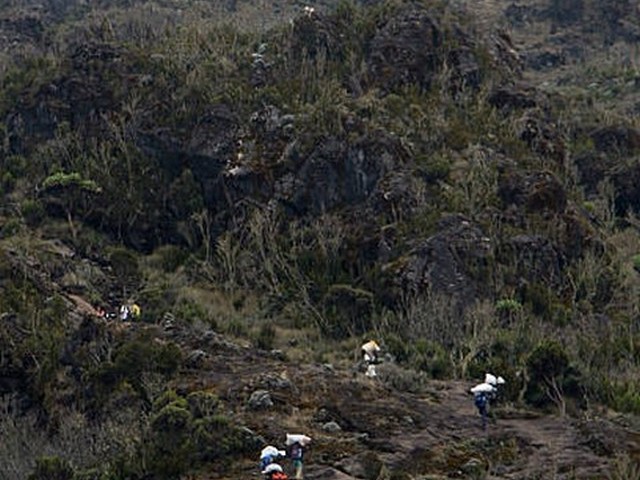Essential Clothing For Kilimanjaro Trek: Your Ultimate Guide
Embarking on a trek up the majestic Mount Kilimanjaro is not just a journey through diverse landscapes but also a traverse across varying climates. Each step upwards through the lush rainforests, alpine deserts, and icy summit zones demands not only courage and determination but also the right gear – particularly, the right clothing. At Kilimanjaro Centre for Trekking and Ecotourism (KCTE), we understand that the key to a successful and enjoyable climb lies in preparation. This guide is dedicated to helping you choose the essential clothing for your Kilimanjaro trek, ensuring you’re as prepared as you can be to conquer the highest peak in Africa.
Why Choosing the Right Clothing Matters
When you trek Kilimanjaro, you encounter five distinct climate zones, each with its own weather challenges. Your clothing is your first line of defense against the elements, from tropical warmth at the base to sub-zero temperatures at the summit. Proper attire will not only keep you comfortable but also safe. It’s about layering smartly, adapting quickly, and preserving your body’s energy for the climb.
Layering: The Golden Rule
Base Layer: Your Second Skin
Start with a robust base layer that wicks away sweat and keeps you dry. Think of materials like merino wool or synthetic fibers. Avoid cotton as it retains moisture and can lead to rapid cooling once you stop moving.
Insulating Layer: Trapping the Warmth
Your mid-layer should insulate and retain body heat. Fleece jackets or a lightweight down jacket are perfect as they are both warm and breathable. This layer can be adjusted according to the temperature fluctuations as you ascend.
Outer Layer: The Shield
Your outer layer should protect you from wind and rain while still being breathable. A good quality, durable, windproof, and waterproof jacket is indispensable. This layer often comes with ventilation zips under the arms and a hood for added protection.
Key Clothing Pieces for Your Kilimanjaro Trek
Trousers and Shorts
Convertible hiking trousers are excellent as they serve dual purposes: long pants for cold temperatures and shorts for the warmer zones. Water-resistant material with UV protection is a bonus.
Shirts and Tops
Long-sleeved shirts are preferable for sun protection during the day and warmth during cooler evenings. Like your base layer, these should be made from moisture-wicking material.
Headwear and Handwear
A brimmed hat or a cap will shield you from the sun while a beanie or balaclava will keep you warm during the chilly ascent. Don’t forget thermal gloves – waterproof and insulated ones are best for the summit night.
Footwear: Your Best Ally
A good pair of waterproof, broken-in hiking boots is crucial. Make sure they have ample ankle support and a sturdy grip. Pair them with moisture-wicking socks and consider liner socks to prevent blisters.
Additional Accessories
- Gaiters: Useful for keeping mud, rocks, and snow out of your boots.
- Sunglasses: Essential for protecting your eyes from UV rays and glare, particularly at higher altitudes.
- Thermal Underwear: Necessary for the colder night treks and summit night.
Practical Tips for Packing
- Test Your Gear: Make sure everything fits comfortably and is broken in, especially your boots and backpack.
- Pack for All Weather Conditions: Be ready for sun, rain, and cold. Kilimanjaro’s weather can be unpredictable.
- Be Weight Conscious: Remember that you or your porter will be carrying these items, so think lightweight and multi-functional.
Why Trek with Kilimanjaro Centre For Trekking and Ecotourism (KCTE)?
When you choose KCTE, you’re not just choosing another tour company; you’re opting for a partner who will guide you through preparing for and successfully completing your trek. We offer expert advice on the essential clothing for Kilimanjaro treks and provide support every step of the way. Our guides are seasoned professionals, trained in emergency preparedness, and passionate about both the mountain and ensuring you have the trip of a lifetime.
FAQs: Essential Clothing for Kilimanjaro Trek
Q: How many layers should I wear on summit night?
A: On summit night, you’ll want at least four layers on top (base, mid, insulating, and outer) and three on the bottom (thermal, trekking trousers, and waterproof pants).
Q: Can I rent clothing items instead of buying them?
A: Yes, KCTE offers rental options for major clothing items like jackets and pants. This can be a good option if you don’t want to invest in gear you may not use again.
Q: What should I avoid wearing on Kilimanjaro?
A: Avoid cotton as it absorbs moisture, and jeans, which can be heavy and restrictive. Opt for breathable, moisture-wicking fabrics instead.
Conclusion: Ready to Conquer Kilimanjaro?
Equipping yourself with the essential clothing for your Kilimanjaro trek is paramount to the success of your climb. Every piece of clothing should serve a purpose of protection, comfort, and mobility. At Kilimanjaro Centre For Trekking and Ecotourism, we’re committed to ensuring you’re well-prepared for the journey ahead with the right gear, guidance, and support.
Are you ready to take on the challenge of Kilimanjaro with the best in the business? Contact us today to book your climb and start your journey to the roof of Africa. The mountain awaits, and with KCTE, you’re already closer to the summit.
Book your Kilimanjaro climb with KCTE now and step into the adventure that changes you forever.




